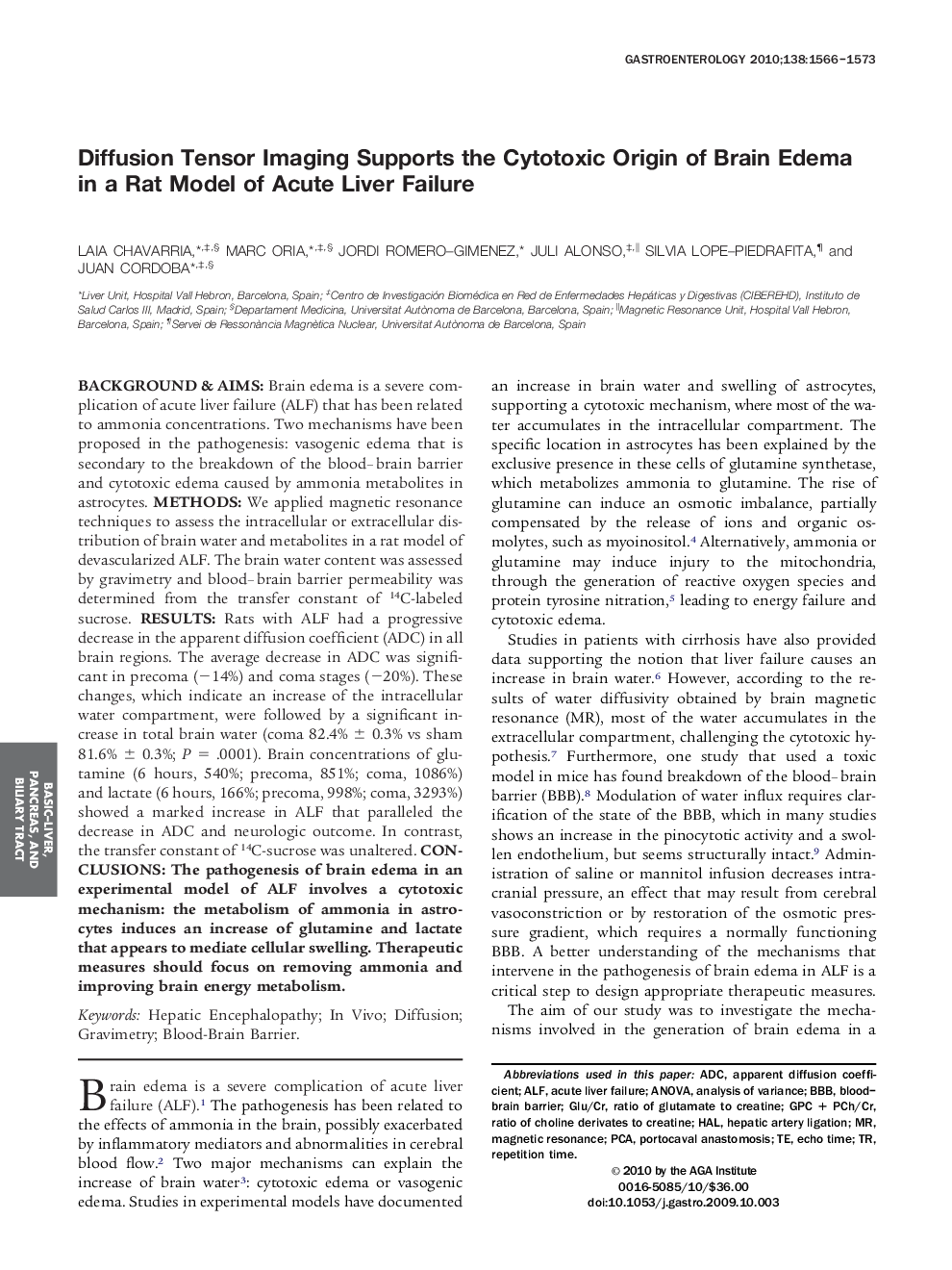| Article ID | Journal | Published Year | Pages | File Type |
|---|---|---|---|---|
| 3296548 | Gastroenterology | 2010 | 8 Pages |
Background & AimsBrain edema is a severe complication of acute liver failure (ALF) that has been related to ammonia concentrations. Two mechanisms have been proposed in the pathogenesis: vasogenic edema that is secondary to the breakdown of the blood–brain barrier and cytotoxic edema caused by ammonia metabolites in astrocytes.MethodsWe applied magnetic resonance techniques to assess the intracellular or extracellular distribution of brain water and metabolites in a rat model of devascularized ALF. The brain water content was assessed by gravimetry and blood–brain barrier permeability was determined from the transfer constant of 14C-labeled sucrose.ResultsRats with ALF had a progressive decrease in the apparent diffusion coefficient (ADC) in all brain regions. The average decrease in ADC was significant in precoma (−14%) and coma stages (−20%). These changes, which indicate an increase of the intracellular water compartment, were followed by a significant increase in total brain water (coma 82.4% ± 0.3% vs sham 81.6% ± 0.3%; P = .0001). Brain concentrations of glutamine (6 hours, 540%; precoma, 851%; coma, 1086%) and lactate (6 hours, 166%; precoma, 998%; coma, 3293%) showed a marked increase in ALF that paralleled the decrease in ADC and neurologic outcome. In contrast, the transfer constant of 14C-sucrose was unaltered.ConclusionsThe pathogenesis of brain edema in an experimental model of ALF involves a cytotoxic mechanism: the metabolism of ammonia in astrocytes induces an increase of glutamine and lactate that appears to mediate cellular swelling. Therapeutic measures should focus on removing ammonia and improving brain energy metabolism.
